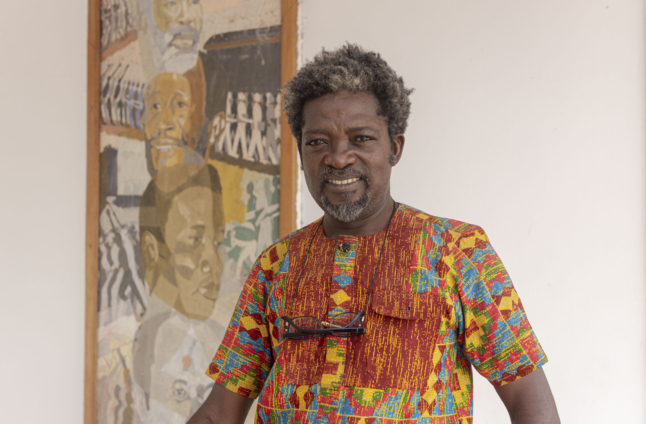On the campus of Kwame Nkrumah University of Science and Technology (KNUST), where history and culture are deeply rooted, the Big Six Monument at the Independence Hall stands as a powerful symbol, both in its stature and its meaning.
However, many people may not know that the person behind this iconic structure is a man whose journey from Odumase Krobo in the Eastern Region of Ghana to the world of academics is as unique and detailed as the artwork he creates.
Jesse James Azzu, a sculptor, carved his name into the university’s history, leaving behind a legacy not only of stone and concrete but of resilience, passion, and cultural pride.
Azzu’s path to becoming a sculptor was anything but conventional. Growing up in a family where law and architecture were the preferred career choices, his love for drawing didn’t quite fit the mold. His mother envisioned him as a lawyer, while his father dreamed of him becoming an architect. But Azzu felt a different calling: sculpture.
Choosing to follow his passion was a bold decision, driven by his belief that true fulfillment lay in expressing his creativity through this art form, even if it meant defying his parents’ wishes.
Azzu’s journey was further shaped by a profound family legacy.
He hails from a lineage deeply intertwined with Ghana’s artistic history, as he is related to the late Vincent Akwete Kofi, the renowned artist and former head of the Art Department at KNUST, whose works once appeared on the old Ghanaian currency.
This connection to a celebrated artist added another layer of inspiration and purpose to Azzu’s pursuit of sculpture.
Reflecting on his body of work, Azzu humbly stated, “In fact, I will say I’m proud of all my works.
The wonderful thing is that I don’t know how I sometimes arrive at the finished product. I have so many works that I can’t even count.
It is not about having too many photographs to my credit or my name, but the love I have for work. It’s more of a gift than a study.”
The Big Six
The creation of the Big Six Monument was born out of a spontaneous idea.
Although Azzu was a resident of Queen’s Hall, he often visited Independence Hall and wanted to create something that would reflect the country’s independence. “I wanted to create something that relates to the independence of the country,” he recalls.
It was during this time that he had the chance to meet Prof. Kwasi Obiri-Danso, the Hall Master at the time. “He gave me the opportunity to come up with ideas.
We initially agreed on the pictorial monument of the ‘Eve of Independence.’ We also considered the ‘Point of No Return’ and eventually settled on depicting the six of them together in concrete terms.”
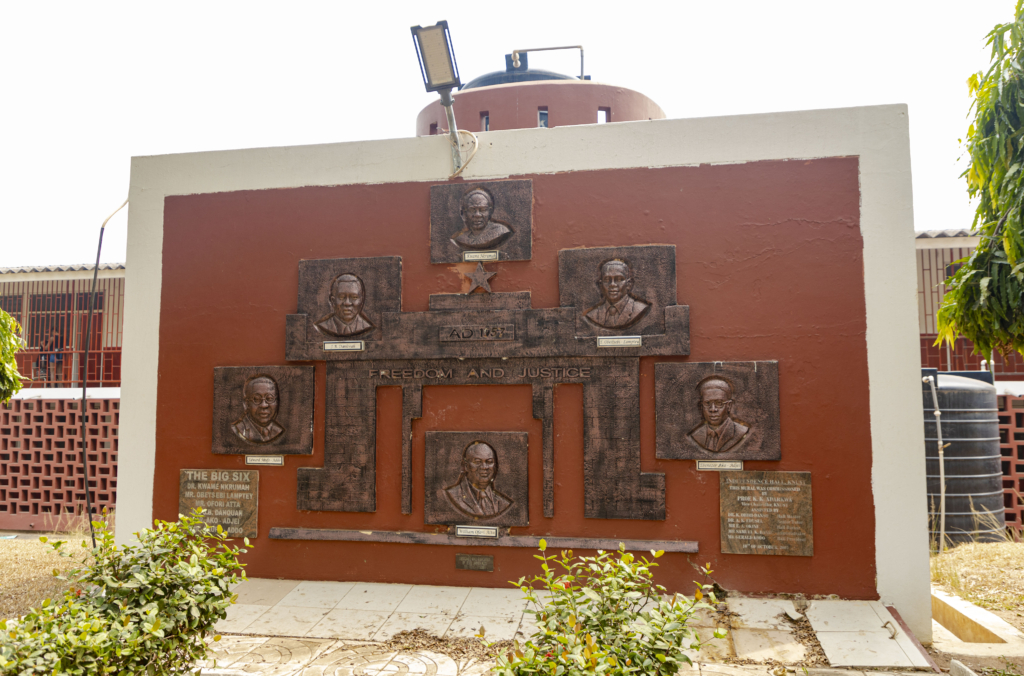
“This is the first of its kind in the country,” Azzu notes. “Where the six are depicted together in concrete; otherwise, you would find them separately placed elsewhere.”
The Big Six has since become a symbol of Independence Hall, a tribute that resonates deeply with the university community.
On every 6th of March, the university gathers to lay wreaths in honour of the hall, the university, and the nation of Ghana.
Azzu’s commitment to leaving a legacy didn’t end there. “I wanted to leave a legacy at my hall,” he shares.
“I approached my then Hall Master at Queen’s, Dr. Owusu-Daaku, and asked if I could create something for the hall. He gave me permission to do that.”
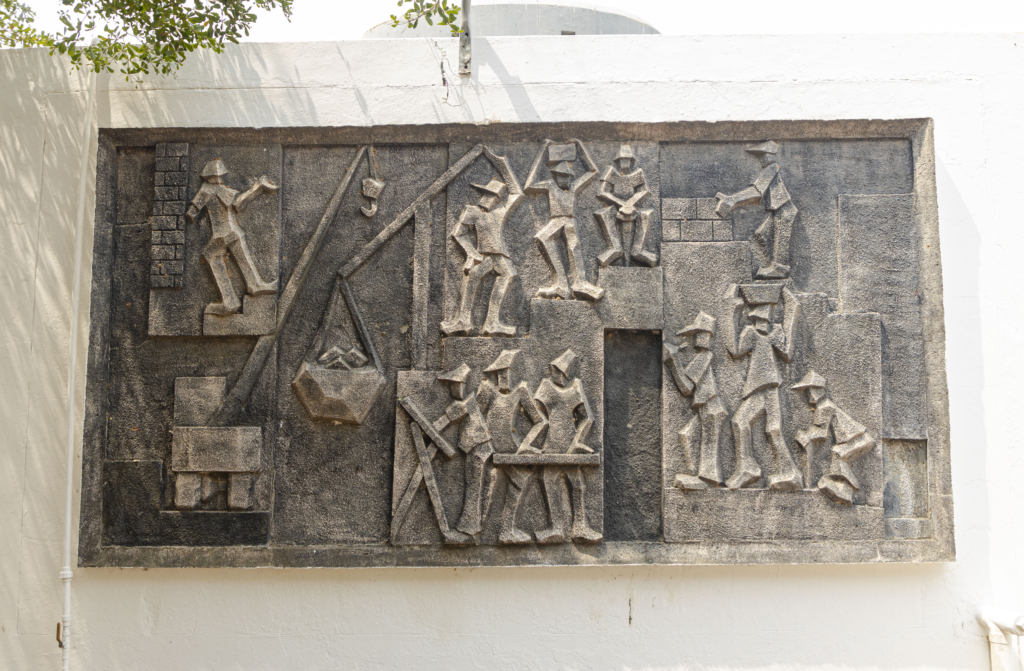
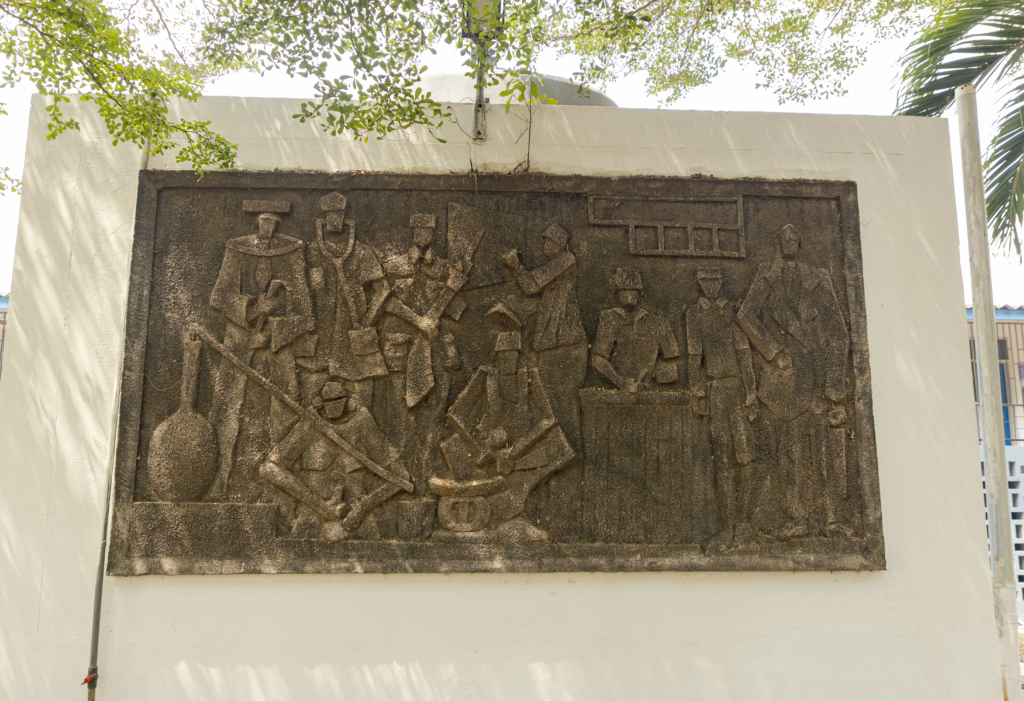
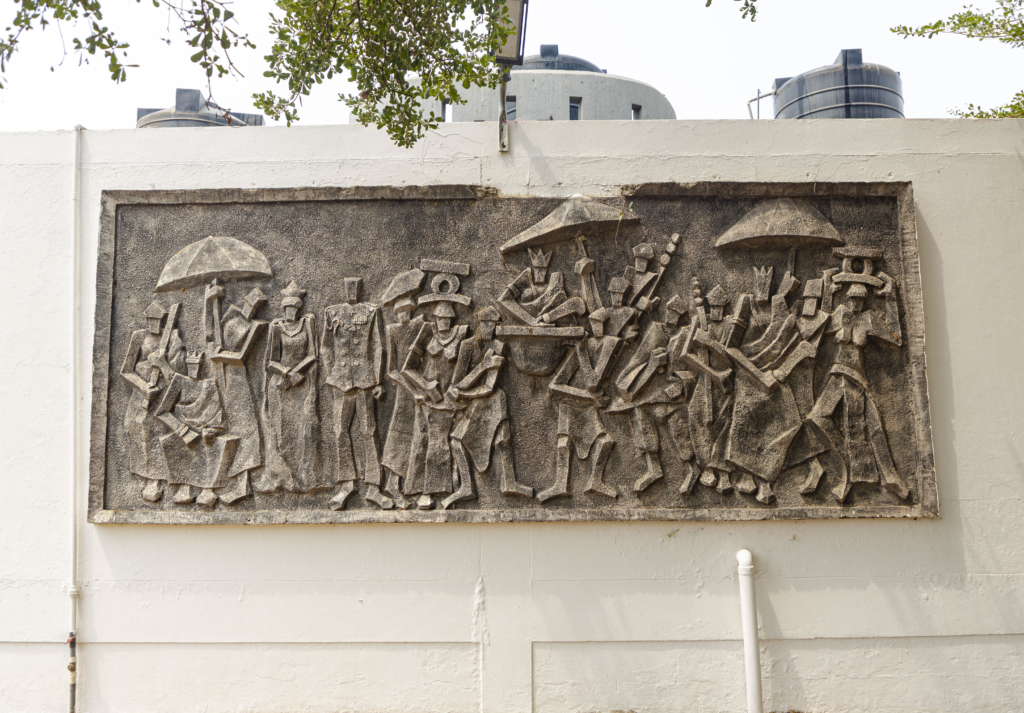
Drawing inspiration from themes of royalty, Azzu’s work included traditional elements alongside portrayals of Her Majesty Queen Elizabeth II and the Duke of Edinburgh.
The design also featured the theme of Achievement, symbolizing its successful alumni, including chemists, teachers, lawyers, sculptors, businessmen, and doctors.
Another theme honoured the Development of the hall and the university in a building form, emphasizing the integrative growth of both institutions,” Azzu explains.
Promoting The African Narrative
Azzu’s focus on promoting the African narrative through his art is evident in his approach to sculpture. “I concentrate more on inscriptions,” he explains.
“The first time I ventured into traditional sculpture was during my time in school, about three months before completing my studies.
I approached the hall with the intention to create something for it, and I was given a theme. While this is realism, I wouldn’t necessarily classify it as purely cultural.”
He goes on to discuss the rapid evolution of African art on the global stage. “African art is growing very fast, and every day we see new changes,” Azzu notes.
“The abstract side of it is expanding, with new ideas emerging at a very fast rate.”
Other Notable Works
Azzu’s artistic contributions extend far beyond KNUST. Azzu has been involved in the raising the dome house for the Gyamadudu Museum in the Ashanti Region, from foundation to completion and supervising various aspects of the sculpting process, among other roles.
He is the creative force behind the 60-foot diameter ECG main logo cast in Kumasi, a project that showcases his mastery of casting techniques rather than direct modeling, which he describes as distinct from his usual style.
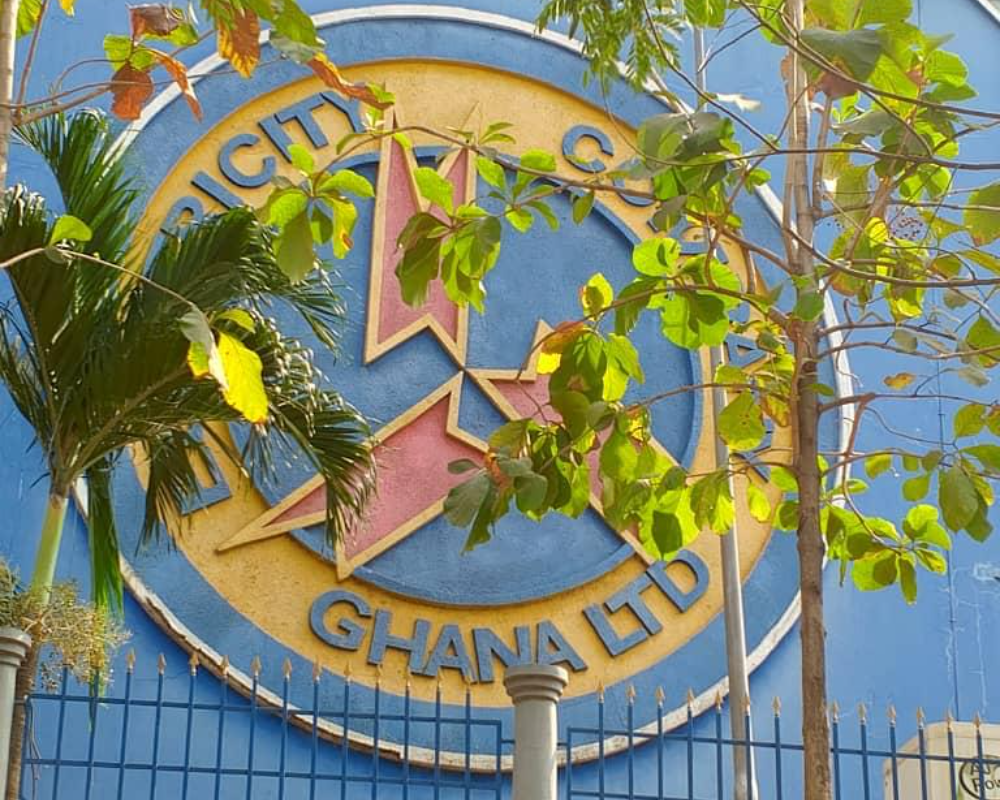
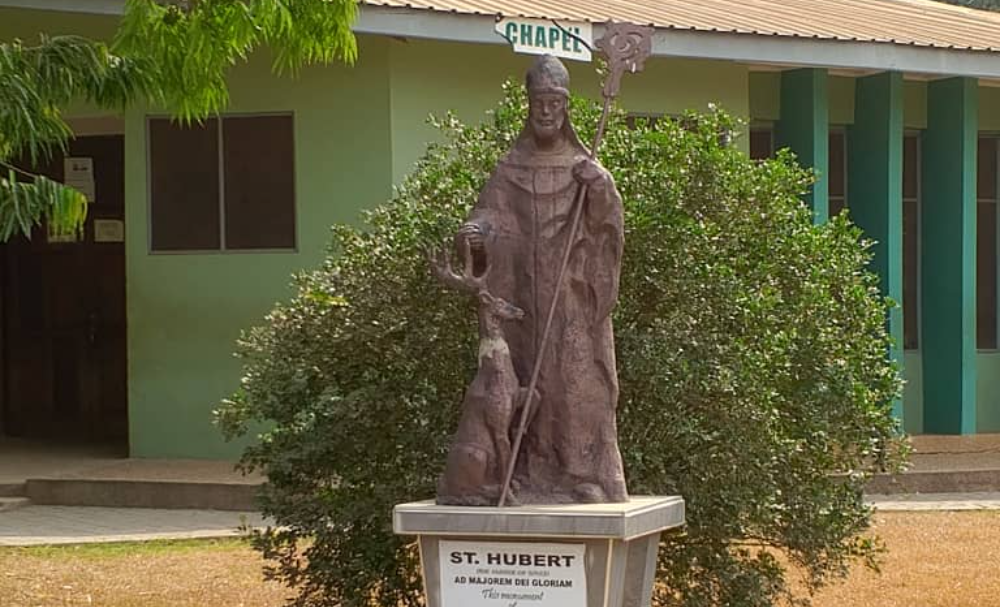
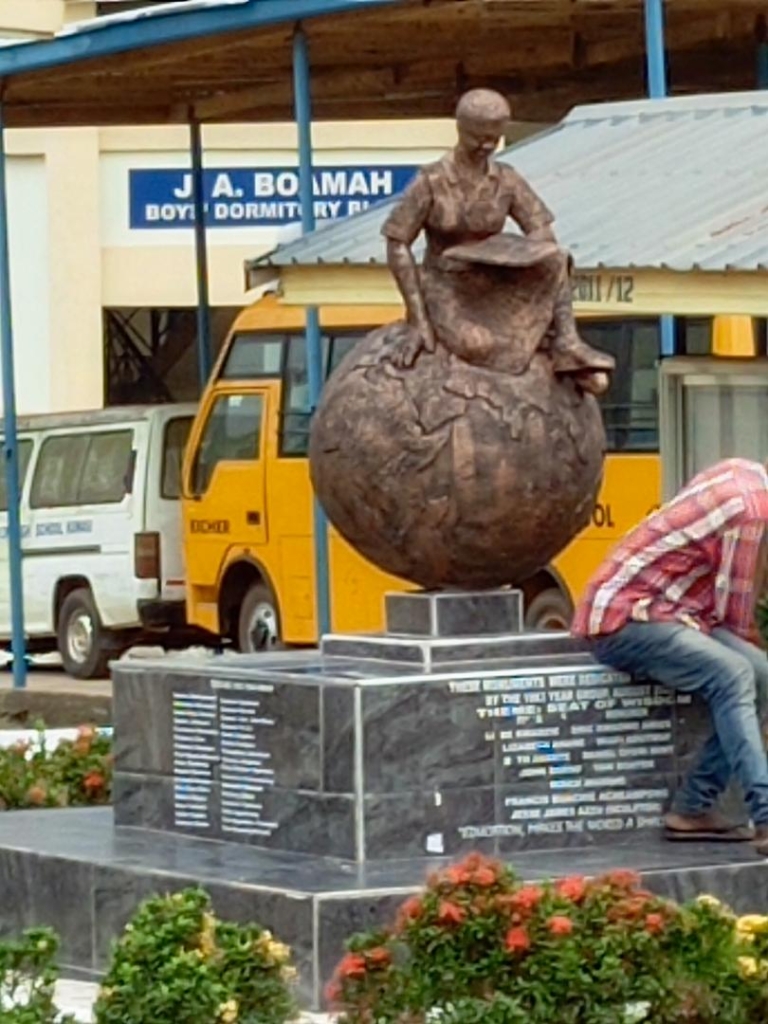
His works also grace other institutions, including St. Hubert Seminary and KNUST Senior High School, where his sculptures continue to inspire and educate.

